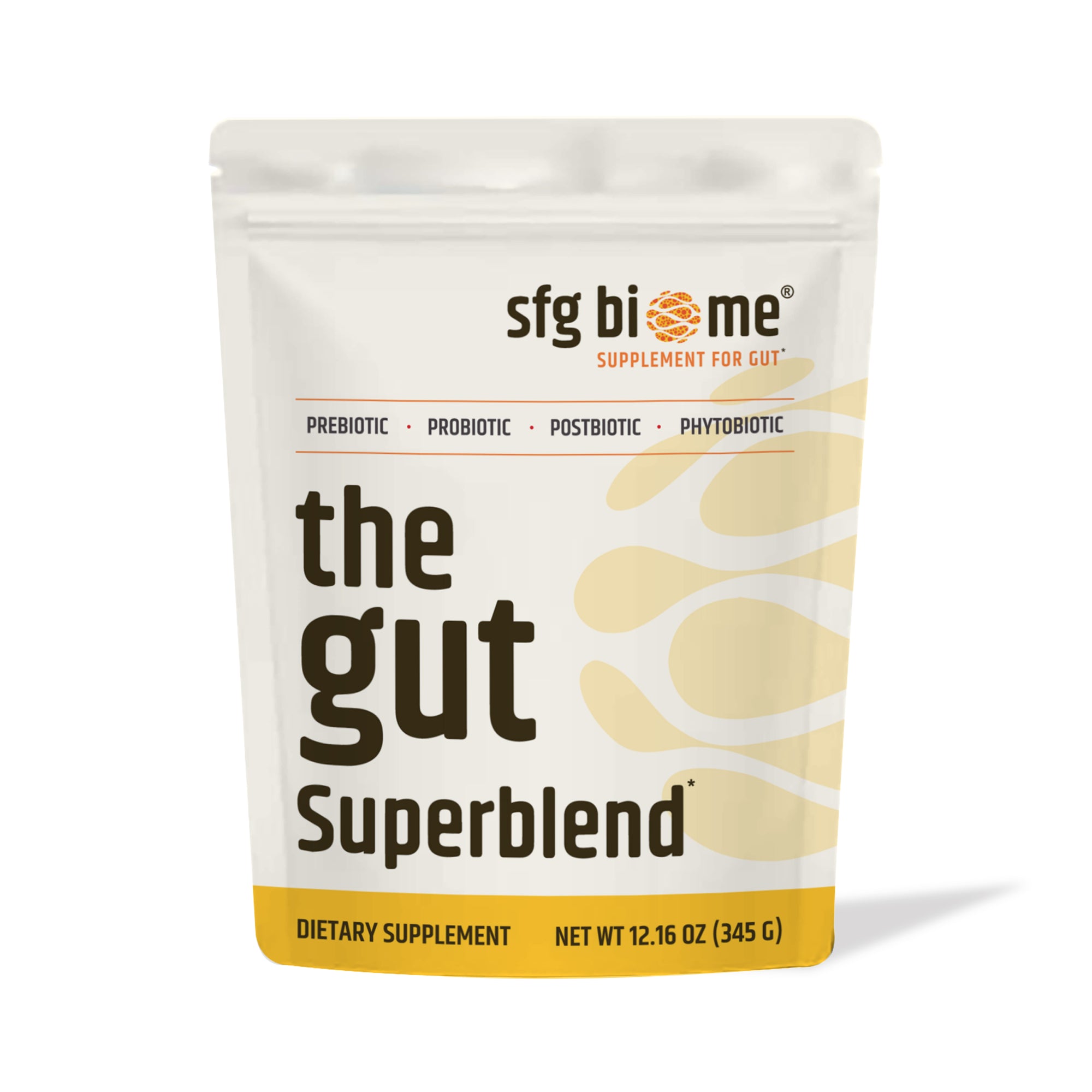Understanding Fiber and Digestion

Fiber is a type of carbohydrate that your body can’t fully break down. Unlike sugars or starches that get digested in the small intestine, fiber travels mostly intact into the large intestine—where trillions of tiny gut bacteria get to work.
There are two main types of fiber, and both play unique roles:
- • Soluble fiber dissolves in water, forming a soft gel that slows digestion and supports healthy cholesterol and blood sugar balance. You’ll find it in oats, apples, beans, and citrus fruits.
- • Insoluble fiber adds bulk to stool and helps keep things moving smoothly. It’s found in foods like whole grains, nuts, and vegetables.
When More Isn’t Always Better
Fiber has incredible benefits for digestive wellness, but the key is balance and adaptation. When you consume much more fiber than your body is used to, your digestive system can get a bit overwhelmed.
Here’s why:
- • Fermentation overload: Gut bacteria ferment fiber to produce short-chain fatty acids (SCFAs) that nourish your colon. But too much fiber at once can lead to excess gas and bloating as bacteria “feast” on it faster than your system can handle.
- • Dehydration effect:. Fiber absorbs water. Without enough fluids, it can actually slow down digestion and lead to discomfort or constipation.
- • Sudden microbiome shift: If your gut isn’t used to a high-fiber diet, the balance of bacteria needs time to adjust. The sudden change can cause temporary digestive stress until your microbiome stabilizes.
How to Know If You are Getting Too Much Fiber
Every person’s fiber threshold is different, but common signs your gut might need a break include:
- • Persistent bloating or gas after high-fiber meals
- • Abdominal cramping or heaviness
- • Constipation or irregular stools
- • Feeling overly full even after small portions
Finding Your Fiber Sweet Spot

The recommended daily fiber intake. for most adults is about 25–38 grams depending on age and gender. However, the average American only eats around 15 grams per day.
So when you suddenly double that with smoothies, raw veggies, and fiber supplements, your gut struggle to keep up. The key is slow and steady:
- • Increase gradually: Add just a few grams of fiber per day. This gives your gut microbiome time to adapt.
- • Stay hydrated: Drink plenty of water. Think of fiber as a sponge—it needs water to move comfortably through your digestive tract.
- • Cook your vegetables: Lightly steaming or roasting breaks down fibers, making them easier on your system.
- • Mix fiber types: : Combine soluble and insoluble fibers for smoother digestion.

When to Reassess Your Fiber Intake
If you are eating plenty of whole foods but still experiencing ongoing digestive discomfort, it’s worth taking a closer look at your overall eating pattern:
- • Are you drinking enough water?
- • Are you balancing raw and cooked foods?
- • Do you give your body time to adjust to new habits?
The Bottom Line
Fiber is one of the most important nutrients for long-term gut and digestive health. It supports healthy digestion, nourishes beneficial gut bacteria, and helps you feel satisfied after meals. But just like anything good, it’s all about balance.
Too much fiber too soon can make your gut work overtime, leading to gas, bloating, and discomfort. The best approach is to build up slowly, stay hydrated, and listen to your body’s signals.
When needed, probiotics, enzymes, and fiber supplements can offer additional support to help your digestive system feel its best—all part of maintaining a comfortable, resilient gut.
So next time your stomach feels off after a “healthy” meal, remember—it’s not the fiber that’s the problem, it’s how fast your gut’s catching up. Give it time, stay balanced, and let your body find its own healthy rhythm.
FAQs
1. Can cooking foods make fiber easier to digest?
Absolutely. Cooking vegetables and legumes softens their fibers, making them gentler on your digestive system. Lightly steaming, roasting, or simmering high-fiber foods can reduce the chance of gas or bloating, especially if you are still adjusting to a higher-fiber diet.
2. Is it safe to eat more fiber?
Yes, though it’s uncommon from food alone. Eating significantly more fiber than your body can handle—especially without enough water—can lead to bloating, cramping, or constipation. Listen to your body’s signals. If you are feeling uncomfortable, reduce your fiber slightly, increase fluids, and reintroduce it gradually for a smoother experience.
3. What’s the best way to support digestion when eating more fiber?
Hydration is key—fiber needs water to move smoothly through your system. Pair high-fiber foods with a balanced diet that includes lean proteins and healthy fats. Some people also use probiotic or enzyme supplements to support the breakdown of complex foods and maintain digestive harmony. The goal is balance, not overload.




